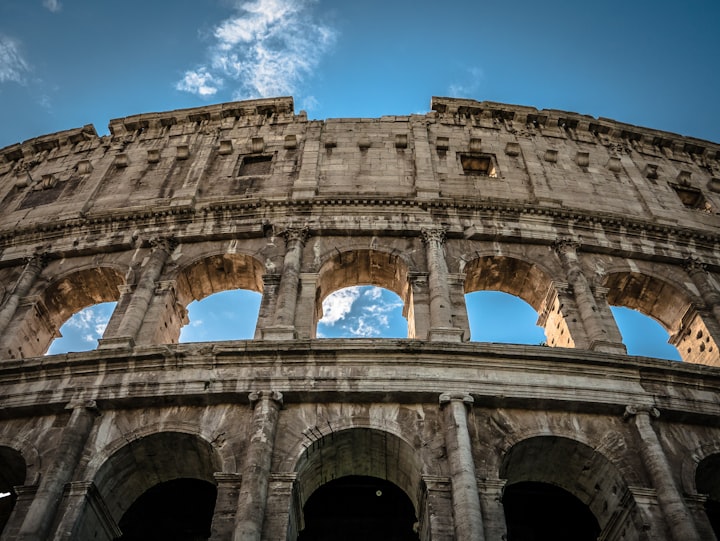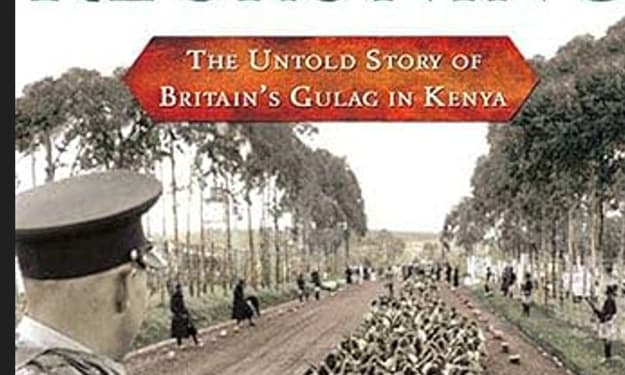The Rise and Fall of the Roman Empire
A Tale of Power, Glory, and Decline

The Roman Empire is one of history's most recognizable and impactful civilizations. The rise and fall of the Roman Empire is a story of extraordinary splendor, conquest, government, and, eventually, decline, from its humble beginnings in the 8th century BC to its eventual destruction in the 5th century AD. In this post, we will look at the fundamental elements that catapulted the Roman Empire to prominence as well as the complicated forces that ultimately contributed to its demise.
The tale of Rome's rise begins in 753 BC, with the mythological founding of Romulus and Remus. Rome benefited from its advantageous location on the Italian Peninsula, which provided easy access to trade routes and lush areas. Rome began as a monarchy but eventually became a republic in 509 BC, defined by a system of checks and balances, representation, and the rule of law.
Rome's military prowess was crucial to its rise to power. The discipline and adaptability of the Roman legions allowed them to conquer enormous territory. By the second century BC, Rome had cemented its authority over the whole Mediterranean region, establishing a massive empire stretching from Britain to Egypt.
The foundation of the Pax Romana, an era of relative peace and stability that began with the reign of Augustus in 27 BC, was one of the defining features of Rome's glory. During this period, the empire experienced greater trade, cultural interaction, and wealth. Law, engineering, and architecture flourished in Rome, leaving a lasting legacy for the rest of the globe.
The Roman Republic had gradually evolved into a principate, with the emperor serving as the dominant figure of authority. While the empire had many emperors during this time, several are known for their contributions to the empire's growth and wealth, including as Augustus, Trajan, and Hadrian.
However, the very factors that had propelled Rome's success began to work against it. The empire's size posed administrative issues, and as the empire grew, corruption and mismanagement became increasingly common. Economic difficulties such as inflation and taxation destroyed the Roman populace's affluence.
External threats also contributed to Rome's demise. Germanic tribes, Huns, and Visigoths constituted an ongoing threat to the borders. The Romans suffered important military defeats, such as the Battle of Adrianople in 378 AD, which reduced their hold on the western provinces.
Political unrest has worsened the downturn. The frequent transition of emperors, which was frequently accompanied by assassinations and civil wars, weakened the central authority. The Third Century Crisis, typified by multiple short-lived emperors and regional uprisings, nearly brought the empire to its knees.
In order to better govern his vast empire, Emperor Diocletian instituted important administrative reforms in the late third century. He divided the empire into two halves, the Eastern and Western Roman Empires, with the Eastern part centered on Byzantium (later known as Constantinople). While this divide gave temporary relief, it ultimately signaled the end of the western half.
In the fourth and fifth centuries, the Western Roman Empire suffered a succession of crises, including invasions by barbarian tribes such as the Visigoths, Vandals, and Huns. The Visigoths under Alaric sacked Rome in 410 AD, and the Vandals did the same in 455 AD. Finally, in 476 AD, Odoacer, a Germanic leader, deposed Romulus Augustulus, the last Roman emperor.
While the Eastern Roman Empire, sometimes known as the Byzantine Empire, had survived for nearly a millennium, the Western Roman Empire had practically died out. The Western Roman Empire's demise is frequently linked to a combination of internal decadence, military failures, economic troubles, and barbarian invasions.
The Roman Empire left an immeasurable legacy. Its contributions to law, governance, engineering, architecture, art, and language are still influencing modern Western civilisation. The Roman governance structure and justice concepts set the groundwork for many modern political regimes. Latin, the Roman language, inspired several modern languages, including English, French, and Spanish.
The growth and collapse of the Roman Empire exemplifies the complex interplay of circumstances that determine the fate of civilizations. From its humble beginnings on the Italian Peninsula to its pinnacle as a global superpower, Rome's story is one of ambition, creativity, and tenacity. However, the same reasons that catapulted Rome to glory also contributed to its demise. The story of Rome is a timeless reminder of the value of efficient government, economic stability, and social cohesiveness in the preservation of empires and the legacies they leave behind.
About the Creator
John Ammerlane
I love writing about historical figures and events, but also about trivia, geekiness and (weird) sillyness.






Comments (1)
Informative review